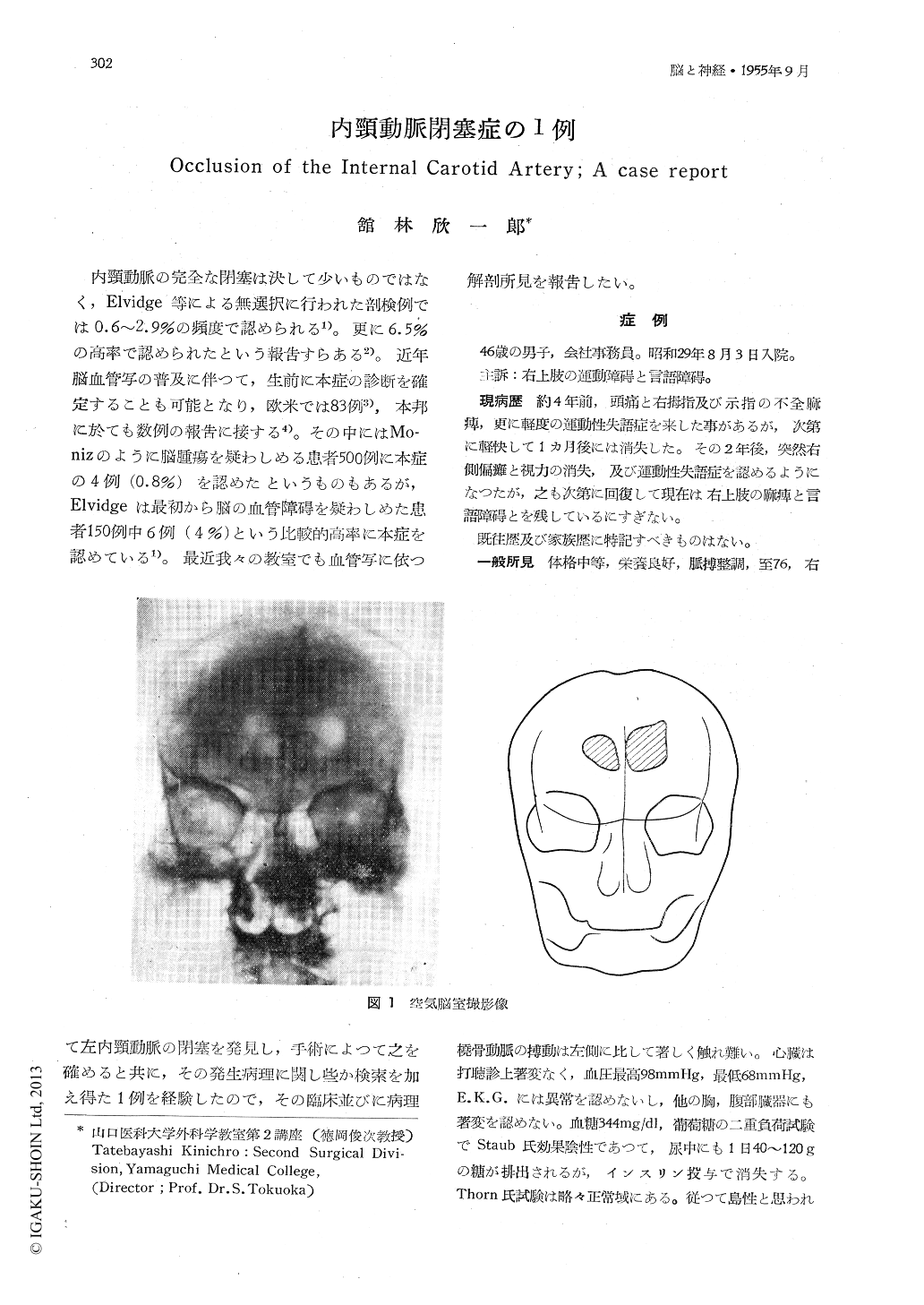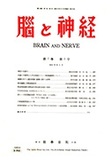Japanese
English
- 有料閲覧
- Abstract 文献概要
- 1ページ目 Look Inside
内頸動脈の完全な閉塞は決して少いものではなく,Elvidge等による無選択に行われた剖検例では0.6〜2.9%の頻度で認められる1)。更に6.5%の高率で認められたという報告すらある2)。近年脳血管写の普及に伴つて,生前に本症の診断を確定することも可能となり,欧米では83例3),本邦に於ても数例の報告に接する4)。その中にはMo-nizのように脳腫瘍を疑わしめる患者500例に本症の4例(0.8%)を認めたというものもあるが,Elvidgeは最初から脳の血管障碍を疑わしめた患者150例中6例(4%)という比較的高率に本症を認めている1)。最近我々の教室でも血管写に依つて左内頸動脈の閉塞を発見し,手術によつて之を確めると共に,その発生病理に関し些か検索を加え得た1例を経験したので,その臨床並びに病理解剖所見を報告したい。
An occlusion of the internal carotid artery was revealed by repeated angiographies in the diabetic patient, aged 46, who had transient right hemiparesis and aphasia during four years.
By the operative exposure of the region of carotid bifurcation, a complete occlusion in the left internal carotid artery was decided. A part of the involved artery was removed with the perivascular sympathetic nervous plexus. Im-mediately after this operation a slight improve-ment of hemiparesis was observed. Histological findings of the resected artery showed throm-bangiitis obliterans.
Thereafter, a left fronto-temporal craniotomy was performed, to ascertain the distal limit of occlusion. The subarachnoidal space was enlar-ged distinctly, and filled with Liquor. The arte-ries of the surface of the brain were so remar-kably contracted, that they appeared to be white and slender, and blood flow could not be obse-rved. But at the time of reoperation performed two days later, these arteries were reddish . i-e. blood flowed in these arteries.
Unfortunately, the patient died from the dia-betic coma. At autopsy, softenings of the brain were observed in a part of the left cerebral hemisphere. The left internal carotid artery was occluded completely, but Willis circle remained intact. Elswhere there was no remarkable occlu-sion.
These findings show that the Willis circle sho-uld be able to supply blood from the opposite side in the left hemisphere. Then it should be concluded that the clinical findings as well as the histological changes should be chiefly due to the sympathetic angiospastic reflexes in the pe-ripheral branches of the affected carotid system, which were initiated from the involved vessels. The clinical improvement following the rese-ction of the involved artery should be due to the dissection of sympathetic angiospastic ref-lex arcs.

Copyright © 1955, Igaku-Shoin Ltd. All rights reserved.


